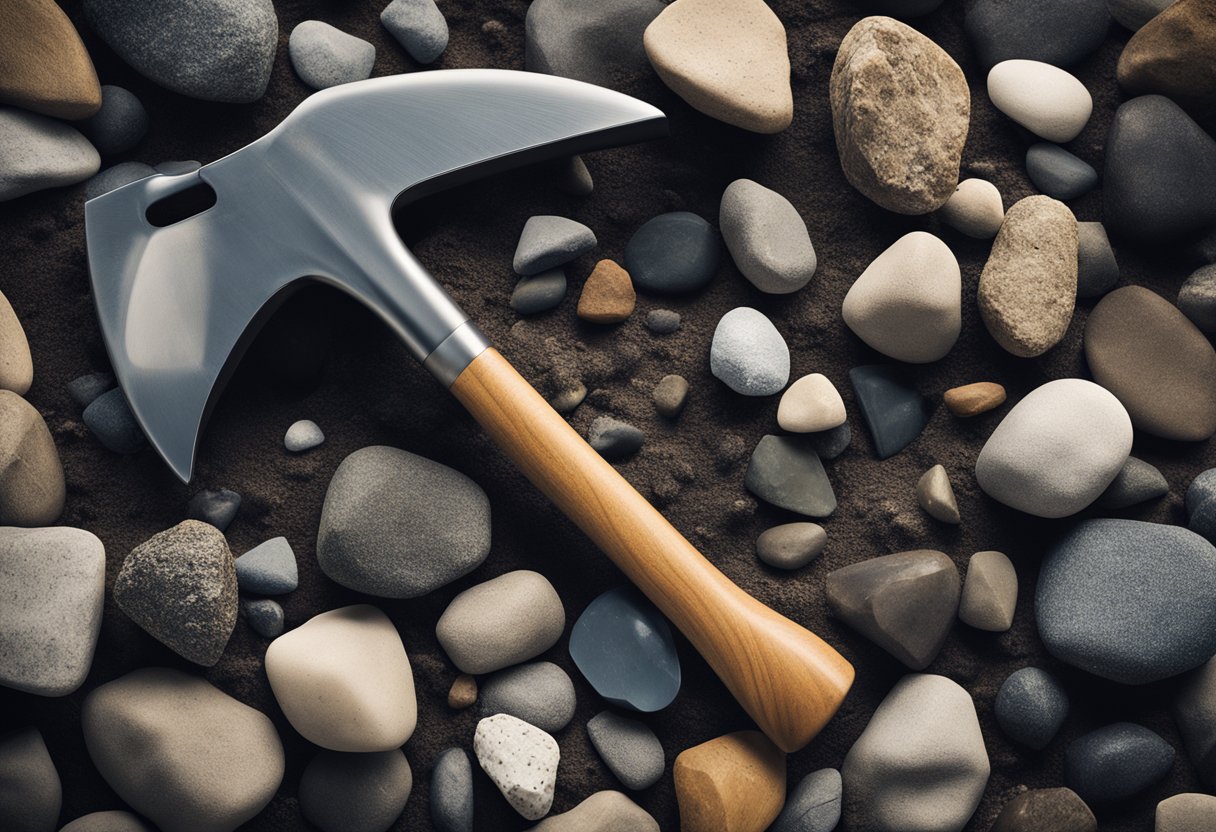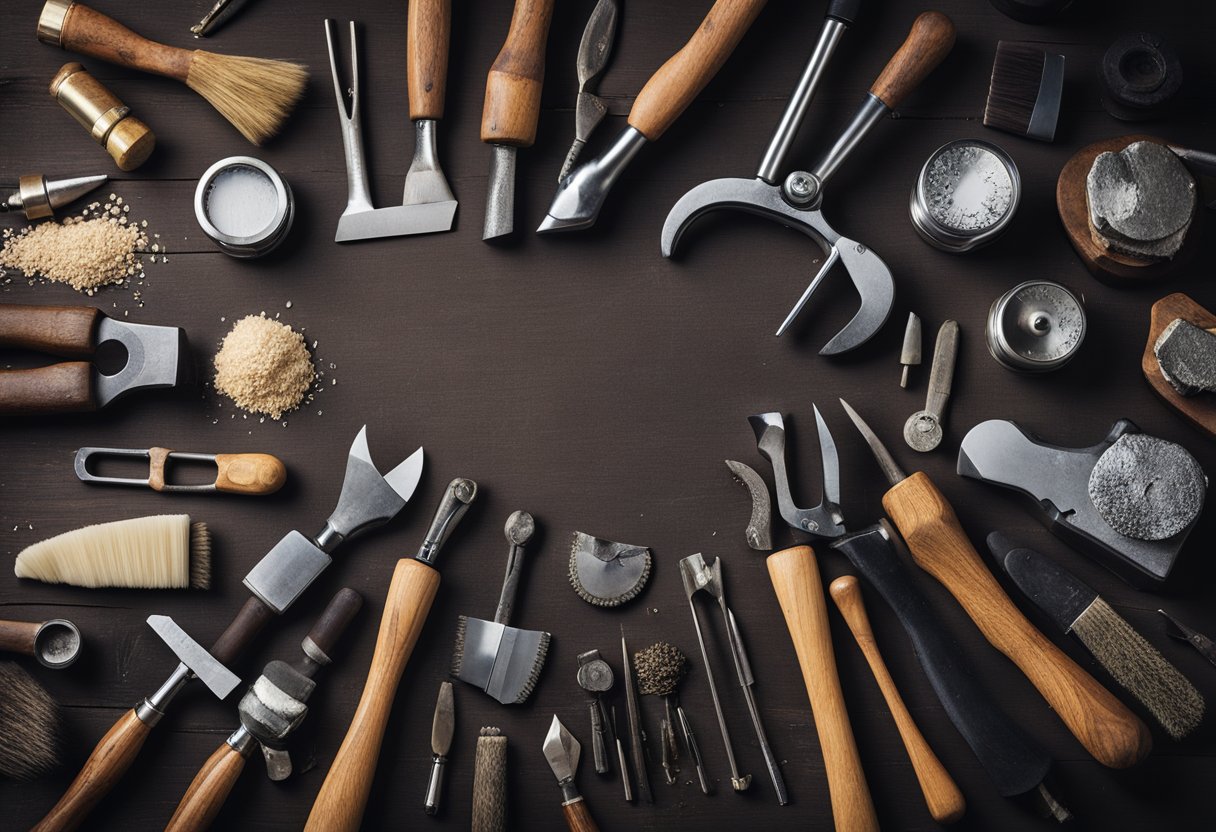Rockhounding, also known as amateur geology, is a leisure activity that involves collecting rocks and minerals from their natural environment. It’s an engaging hobby that can be enjoyed by individuals of all ages and skill levels. Whether your interest lies in finding precious gemstones, rare mineral specimens, or simply beautiful rocks, having the right tools can transform your experience from frustrating to fruitful. I’ve discovered over time that the equipment you carry can either limit or enhance your exploration, potentially leading to thrilling discoveries of nature’s hidden treasures.

Choosing the right tools is essential for an effective and safe rockhounding venture. Initially, I started with a sturdy rock hammer, which quickly became my trusty sidekick. It’s indispensable for breaking, chipping, and prying open rocks. But as I immersed myself deeper into this hobby, I realized the value of having additional gear tailored to my needs. A good backpack, a set of hardness picks, a hand lens to inspect small details, a brush for cleaning finds, and of course, safety goggles to protect my eyes became part of my exploration kit. Tailoring my equipment not only made my outings more enjoyable, but also increased the chances of finding those exceptional pieces that make the hobby so rewarding.
Key Takeaways
- Rockhounding is a fulfilling hobby that involves collecting natural geological specimens.
- Beginning with basic tools like a rock hammer is essential, but additional tailored gear enhances the experience.
- Protecting oneself with safety equipment and maintaining tools ensures ongoing successful rockhounding adventures.
Getting Started with Rockhounding
In my years of experience, I’ve found that embarking on the adventure of rockhounding begins with understanding the lingo and assembling the right set of tools. Let me guide you through the essentials.
Essential Terminology
- Rockhounding: It’s the hobby of collecting rocks and minerals from their natural environment.
- Specimen: The actual rock or mineral that I collect.
- Locality: The geographical area where I search for specimens.
Selecting Your First Rockhounding Kit
When I chose my first rockhounding kit, I made sure it included the following essentials:
- Hammer: A sturdy rock hammer for breaking specimens.
- Chisels: Different sizes to help extract rocks from their surroundings.
- Gloves: To protect my hands during the hunt.
- Backpack: A durable pack to carry my tools and finds.
My rockhounding tool kit often varies depending on my destination, but these are the supplies I never leave without.
Common Rockhounding Tools
When I prepare for a rockhounding adventure, I ensure I have the essential tools for collecting samples safely and effectively. Hammers, chisels, and safety equipment are the core of my rockhounding kit.
Hammers and Chisels
- Rock Hammer: The rock hammer is my go-to tool. It’s useful for breaking rock samples and has two ends—one flat and one pointed—to fit different tasks.
- Chisels: My chisel set includes various sizes to extract minerals delicately. I always pair a chisel with a hammer for precision.
Safety and Protective Equipment
- Safety Glasses: I never overlook the importance of protecting my eyes. Safety glasses help guard against flying rock chips.
- Gloves: Durable gloves protect my hands from sharp rocks and improve grip on tools.
Advanced Rockhounding Equipment
When I deepen my passion for rockhounding, I find myself relying on advanced tools that cater to more specific tasks and situations. These are not just upgrades from basic equipment but specialized items meant for dedicated enthusiasts.
Specialized Geological Tools
For tasks requiring precision and nuanced techniques, I make sure my arsenal includes:
- UV Lamps: To identify fluorescent minerals, I use a UV lamp, which can highlight characteristics not visible under normal light.
- Pneumatic Hammers and Chisels: These are essential when I need to extract samples from hard rock with minimal effort. They’re powered tools that make the job faster and more efficient.
- Geological Microscope: Sometimes, examining rock formations and minerals under a microscope can reveal stunning details and characteristics, enhancing my understanding and appreciation for the samples I find.
- Hardness Kits: To accurately gauge the hardness of minerals, I use a hardness kit, which helps me identify samples on the Mohs scale.
Transport and Storage Solutions
I’ve learned the importance of proper transport and storage for both the preservation of samples and my convenience. My equipment includes:
- Durable Backpacks: A backpack with compartments helps me organize my tools and protect my finds as I move from site to site.
- Custom Containers: For delicate samples, custom containers with padding are a must. They prevent damage during transport.
- Rolling Carts: For carrying heavier items over a distance, a rolling cart is invaluable. It saves me both time and back strain.
By incorporating sophisticated gear into my rockhounding routine, I ensure that my experiences are both rewarding and efficient. Whether it’s advanced field tools or specialized storage options, proper equipment elevates my rockhounding adventures.
Maintaining Your Gear
Maintaining rockhounding supplies is crucial to ensure they last longer and remain effective. I’ll share how I keep my gear in top shape through proper cleaning and storage, as well as some repair and replacement tips.
Cleaning and Storage
Cleaning
- For rock picks and hammers:
- I use a stiff brush to remove dirt and rinse with water.
- I dry them thoroughly to prevent rust.
- For chisels and pry bars:
- I wipe them down with a cloth after use.
- I apply a light coat of oil for protection.
- For delicate instruments like UV lights:
- I use a soft, dry cloth to clean lenses.
- I store them in padded cases to avoid damage.
Storage
- I prefer hanging tools on a pegboard to avoid moisture buildup.
- For smaller items, I use clear containers which help me stay organized.
- I make sure heavy tools are stored low to prevent injuries if they fall.
Repair and Replacement Tips
- Inspect tools for wear and damage after each outing.
- I replace wooden handles if they show cracks or splitting to avoid accidents.
- For rust removal, I apply a rust remover and scrub with steel wool.
- Regularly check screws and fastenings; I tighten them or replace if necessary.
- When tools become irreparable, I invest in quality replacements – it’s safer and more cost-efficient in the long term.
Enhancing Your Rockhounding Experience
In rockhounding, the right approach and the best tools can transform a mere hobby into a fulfilling adventure. I’ve discovered that joining thriving communities and tapping into a plethora of educational resources elevates this pastime to new heights.
Joining Communities and Groups
I can’t overstate the value of connecting with fellow rockhounds. From my experience, it’s not just about sharing locations or trading specimens; it’s a rich source of camaraderie and shared knowledge. Here’s how to get started:
- Local Rockhounding Clubs: Usually, they organize field trips, workshops, and gem shows.
- Online Forums and Social Media Groups: Places like Facebook groups and Reddit are great for tips and advice.
- Annual Gem and Mineral Shows: These events are excellent for networking and experiencing the broader rockhounding culture.
Further Learning Resources
Delving into educational resources has significantly improved my skills in identifying and extracting specimens while using rockhounding equipment more effectively. Consider these options:
- Books and Field Guides: In-depth details on minerals, rocks, and fossils, often with visual aids.
- Online Courses and Workshops: Practical demonstrations on equipment use and safety.
Remember that your rockhounding equipment should include, at the very least:
- A Durable Rock Hammer for breaking and chipping
- Safety Gear like gloves and goggles
- A Hand Lens or Jeweler’s Loupe for close inspection
By engaging with communities and continuously learning, you’ll find that your rockhounding experiences become richer and much more rewarding.
Frequently Asked Questions

In this section, I answer some of the most common questions you might have as you prepare to explore the fascinating world of rockhounding. My goal is to equip you with knowledge on the essential gear and safety measures for a successful and enjoyable adventure.
What is the best gear to include in a beginner’s rockhounding kit?
For those just starting out, a basic rockhounding kit should include a sturdy rock hammer, a chisel, safety goggles, gloves, and a backpack to carry finds. Quality and durability are key when selecting these items.
How do I select the right rockhounding hammer for my needs?
The choice of rockhounding hammer should be based on the material you’ll be working with. A standard rock hammer is suitable for most tasks, but if you’ll be splitting rocks, a crack hammer might be more appropriate. The weight and handle length are important for comfort and control.
Where are the best places to purchase rockhounding equipment?
Rockhounding equipment can be found at specialty geology shops, outdoor retailers, and online marketplaces. I find that dedicated geology shops often offer knowledgeable staff who can provide valuable advice and a wide range of quality tools.
What are some essential items to pack for a rockhounding adventure?
Essential items to pack include a first-aid kit, a map or GPS device, plenty of water, snacks for energy, sun protection, and a container or bag to hold your finds. Don’t forget a notebook for taking notes about your locations and discoveries.
How do I protect myself with the right attire for rockhounding?
Wear sturdy boots with good ankle support, a hat with a brim to shield from the sun, and clothing that protects against scratches and provides sun protection. Durable gloves and safety goggles are non-negotiable for protecting your hands and eyes from shards and debris.
What types of tools do professionals use for rockhounding?
Professionals often have an expanded set of tools, including geologist’s picks, sledgehammers, pry bars for moving heavy rocks, GPS devices for mapping their finds, and specialized containers for delicate specimens. High-quality, long-lasting materials are a hallmark of a professional’s kit.

